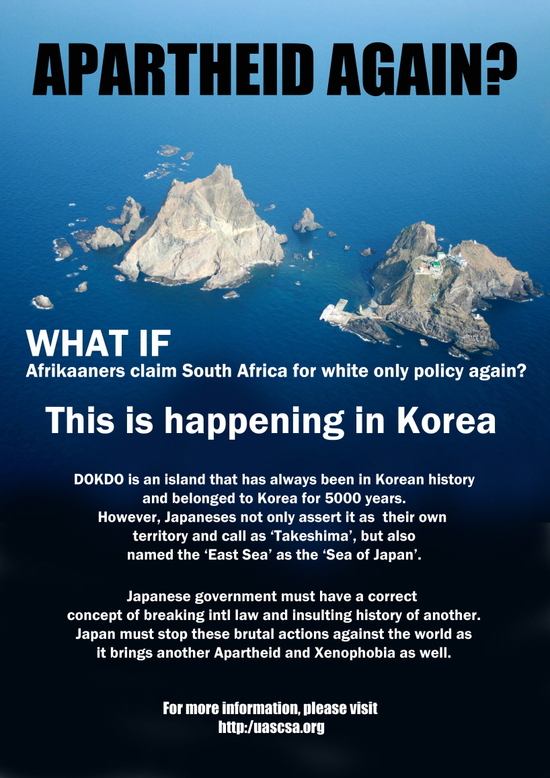Places
Dokdo's Names


Dokdo's names must be considered in relation to Ulleungdo that has been mentioned in various historical records since early years of Korea.
Ulleungdo's Usanguk, a small empire of the native people, was conquered by Silla in the early 6th Century (512 B.C.). In Samguksagi's
Sillabongi, we find the record that "Usanguk was conquered by Silla in June" in the 13th year of the reign of King Jijeung.
As Ulleungdo became the official name of Ulleungdo, Dokdo, a small attachment to Ulleungdo, was named Usando.
Ulleungdo's Usanguk, a small empire of the native people, was conquered by Silla in the early 6th Century (512 B.C.). In Samguksagi's
Sillabongi, we find the record that "Usanguk was conquered by Silla in June" in the 13th year of the reign of King Jijeung.
As Ulleungdo became the official name of Ulleungdo, Dokdo, a small attachment to Ulleungdo, was named Usando.
Sejong Sillok Jirij's Uljin-hyeon of Gangwon-do section, which was written in 1432 (14th year of the reign of Joseon King Sejong), clearly states that there were two islands - Mureung and Usan - in the East Sea. It writes, "Usan and Mureung are situated to the east of Uljin-hyeon.", published in 1531 (26th year of the reign of Joseon King Jungjong), also states, "Usando and Ulleungdo are in the middle of the sea directly to the east of Uljin-hyeon," in the Uljing-hyeon of Gangwon-do section to confirm the texts of Sejong Sillok Jiriji. In the Joseon Dynasty, Dokdo was called Sambongdo, Usando, or Gajido. The map of Korean Empire in Vol. 1, which was used to educate secondary school students in modern schools in 1899 (3rd year of the reign of Joseon King Gojong), marked Dokdo as Usan next to Ulleungdo. King Gojong announced Ordinance No. 41 in 1900 to have Ulleungdo, instead of Uljin-hyeon of Gangwon-do, administer Dokdo.
The name Dokdo was first used in 1906 by Governor Heung Taek Shim of Ulleung. Dokdo was attached to Gyeongsangbuk-do in 1914 and has been a part of Gyeongsangbuk-do ever since. Although Dokdo is written as '獨島' in Chinese letters, it does not mean 'lonely island.' The early settlers from Jeolla-do pronounced Dolseom as Dokseom.
Dokseom was later converted to '獨島' in Chinese writing. Seokdo is pronounced as Dokseom or Dolseom when translated into Korean. Even today, the people of Ulleungdo call Dokdo as Dokseom or Dolseom
In Japan, Dokdo was called Matsushima in the Meiji Administration. Since Japan plundered Korea in 1905, Dokdo has been called Dakeshima. The West named Dokdo after the ship that first found it. In 1849, a French whaling boat called Liancourt discovered Dokdo and named it Liancourt Rocks. In 1885, English Hornet registered it as 'Hornet Rocks.'
The name Dokdo was first used in 1906 by Governor Heung Taek Shim of Ulleung. Dokdo was attached to Gyeongsangbuk-do in 1914 and has been a part of Gyeongsangbuk-do ever since. Although Dokdo is written as '獨島' in Chinese letters, it does not mean 'lonely island.' The early settlers from Jeolla-do pronounced Dolseom as Dokseom.
Dokseom was later converted to '獨島' in Chinese writing. Seokdo is pronounced as Dokseom or Dolseom when translated into Korean. Even today, the people of Ulleungdo call Dokdo as Dokseom or Dolseom
In Japan, Dokdo was called Matsushima in the Meiji Administration. Since Japan plundered Korea in 1905, Dokdo has been called Dakeshima. The West named Dokdo after the ship that first found it. In 1849, a French whaling boat called Liancourt discovered Dokdo and named it Liancourt Rocks. In 1885, English Hornet registered it as 'Hornet Rocks.'
History of Dokdo

- King Jijeung of Silla conquered Usanguk in the 13th year of his reign - Samguksagi.

- Yong Bok Ahn received verification from the Dokugawa Administration of Japan that Ulleungdo and Dokdo are Joseon’s territories - Sukjong Sillok

- King Gojong declared Ordinance No. 41 to change the name of Ulleungdo to Uldo, appointed a governor, instead of local administrator, and assigned Uldo to administer Dokdo.

- Japan named Dokdo as Dakeshima and declared Shimane Notice No. 40 to absorb Dokdo into Japanese territories. (Korea lost national rights to Japan in November 1905 with the Eulsa Treaty.)

- Ulleungdo and Dokdo were transferred from Gangwon-do to Gyeongsang-do in terms of jurisdiction.

- The GHQ (General Headquarters Supreme Commander for the Allied Powers) declared SCAPIN No. 677 to exclude Dokdo from Japanese territories

- Dokdo Royal Guards organized ? Dokdo Security (Chief Sun Chil Hong led 32 members.)

- National Police Agency took over security of Dokdo

- First resident moved to Dokdo (Jong Duk Choi - San 67 Dodong-ri Ulleung-eup)

- Designated as National Cultural Heritage - Natural Monument No. 336 (Dokdo Seaweed Habitat)

- New Korea-Japan Agreement on Fisheries signed

- National Cultural Heritage Administration changed title of Dokdo’s designation as Natural Monument No. 336 (Dokdo Seaweed Habitat → Dokdo Natural Protection Zone)

- April 7 - Dokdo’s administration name and lot numbers changed: Dodong-ri to Dokdo-ri (Seodo-1, Dongdo-2) * Lot numbers: San 42-76 Dodong-ri → San 1-37 Dokdo-ri

- January 1 - The Ministry of Information and Communication assigned postal code ‘799-805’ to Dokdo

- March 24 - 11 lots, including expedition path, released to the public (Dongdo) & Admission Permit System → Admission Registration System; September 21 - lot numbers changed from San 1 through 37 to 1 through 96








